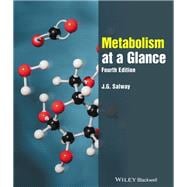Metabolism at a Glance presents a concise, illustrated summary of metabolism in health and disease. This essential text is progressively appropriate for introductory through to advanced medical and biochemistry courses. It also provides a succinct review of inborn errors of metabolism, and reference for postgraduate medical practitioners and biomedical scientists who need a resource to quickly refresh their knowledge.
Fully updated and extensively illustrated, this new edition of Metabolism at a Glance is now in full colour throughout, and includes new coverage of sports biochemistry; the metabolism of lipids, carbohydrates and cholesterol; glyceroneogenesis, α-oxidation and ω-oxidation of fatty acids. It also features the overlooked “Krebs Uric Acid Cycle”.
Metabolism at a Glance offers an accessible introduction to metabolism, and is ideal as a revision aid for students preparing for undergraduate and USMLE Step 1 exams.








